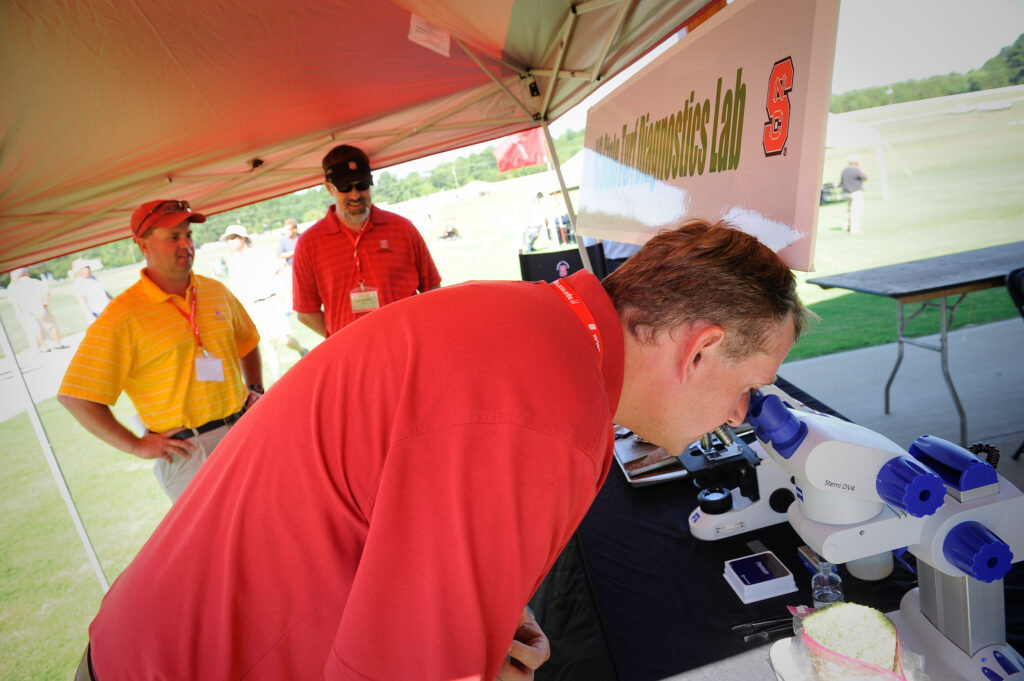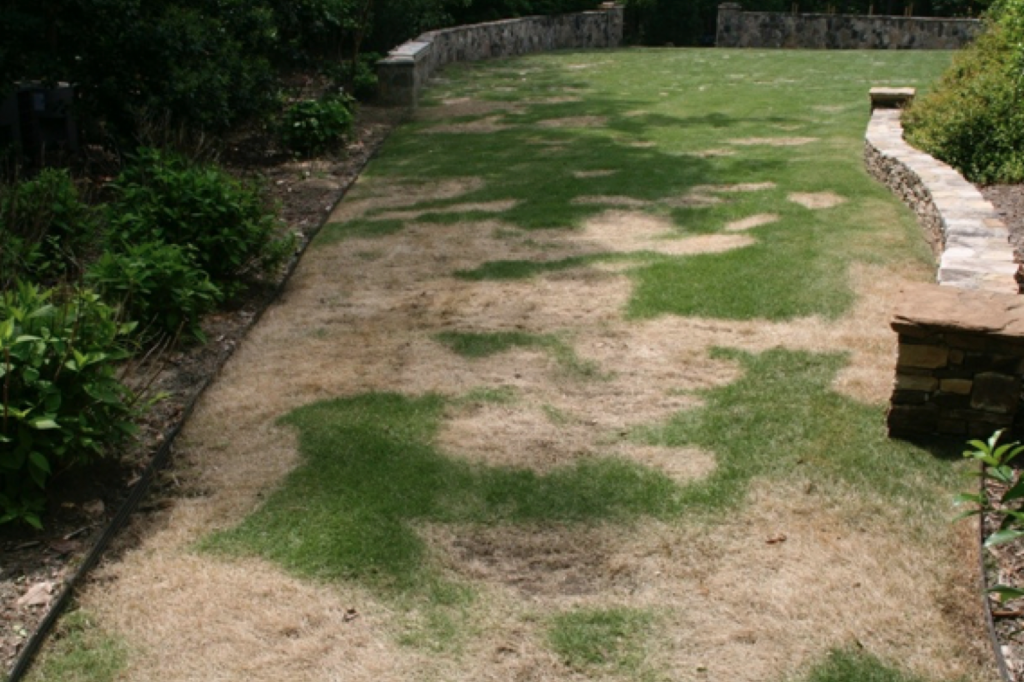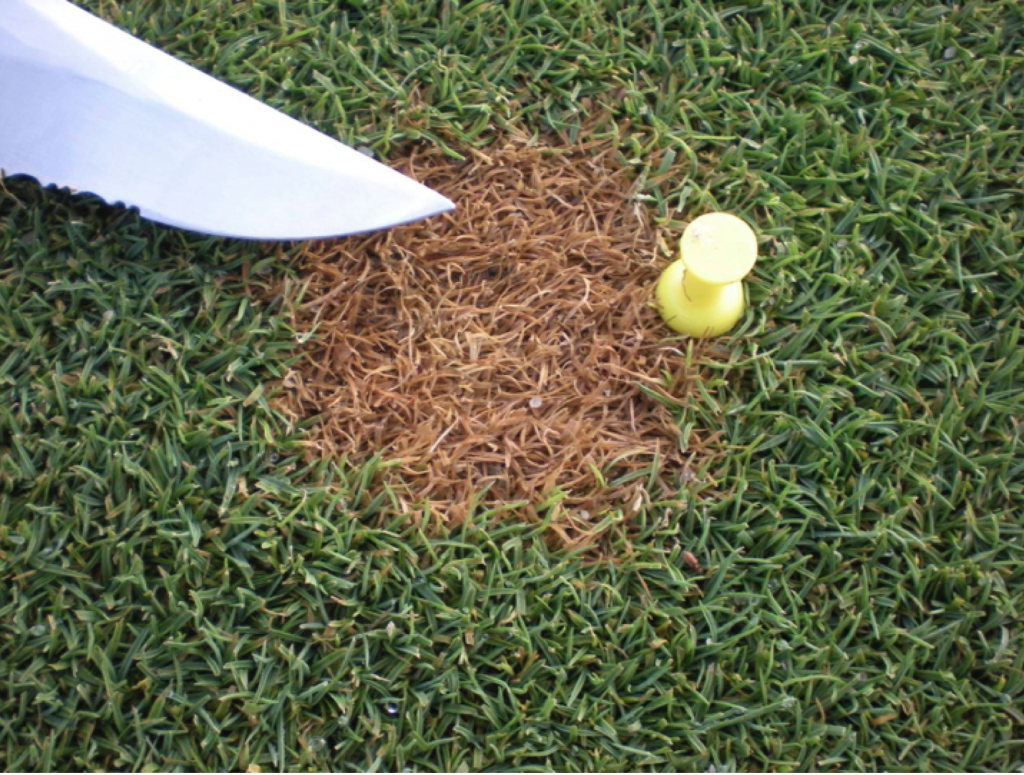My Grass Is Sick! Now What?
go.ncsu.edu/readext?862809
en Español / em Português
El inglés es el idioma de control de esta página. En la medida en que haya algún conflicto entre la traducción al inglés y la traducción, el inglés prevalece.
Al hacer clic en el enlace de traducción se activa un servicio de traducción gratuito para convertir la página al español. Al igual que con cualquier traducción por Internet, la conversión no es sensible al contexto y puede que no traduzca el texto en su significado original. NC State Extension no garantiza la exactitud del texto traducido. Por favor, tenga en cuenta que algunas aplicaciones y/o servicios pueden no funcionar como se espera cuando se traducen.
Português
Inglês é o idioma de controle desta página. Na medida que haja algum conflito entre o texto original em Inglês e a tradução, o Inglês prevalece.
Ao clicar no link de tradução, um serviço gratuito de tradução será ativado para converter a página para o Português. Como em qualquer tradução pela internet, a conversão não é sensivel ao contexto e pode não ocorrer a tradução para o significado orginal. O serviço de Extensão da Carolina do Norte (NC State Extension) não garante a exatidão do texto traduzido. Por favor, observe que algumas funções ou serviços podem não funcionar como esperado após a tradução.
English
English is the controlling language of this page. To the extent there is any conflict between the English text and the translation, English controls.
Clicking on the translation link activates a free translation service to convert the page to Spanish. As with any Internet translation, the conversion is not context-sensitive and may not translate the text to its original meaning. NC State Extension does not guarantee the accuracy of the translated text. Please note that some applications and/or services may not function as expected when translated.
Collapse ▲Now that spring is well underway, many will be on the lookout for the first offenders of the warmer months. Dollar spot, brown patch, and others will begin to pop up once again. Remember, the first step in managing any pest is an accurate diagnosis. Some of these diseases will be harder to diagnose than others, however you can always submit samples to your favorite turf diagnostic lab when in doubt.

A field day attendee looks at a turf sample through a dissecting scope to see plant symptoms and fungal signs.
Here are some tips for submitting samples to any lab:
1. Cover All the Bases
Details, details, details! The more information, the better when it comes to making a diagnosis. Please provide the following information:
- Grass type and use
- Species, variety, when established, etc.
- Putting green, fairway, athletic field, home lawn, etc.
- Recent chemical applications
- What/when/rates/etc.
- Include fungicides, herbicides, insecticides, PGR’s, etc.
- Provide records from past 30 days if possible
- Recent cultural practices
- Aerification, verticutting, topdressing, etc.
- Fertility inputs over the past 30 days
- Mowing height and frequency
- Symptom Description
- When did symptoms appear?
- When was the sample collected?
- Describe plant symptoms – i.e., leaf spots, chlorosis, wilted, etc.
- Describe stand symptoms – i.e., spots, patches, rings, etc.
- Symptom Distribution and Progression
- Describe the spatial pattern – i.e., localized, random, or widespread
- Describe the microclimate – i.e., wet, dry, compacted, thatchy, etc.
2. Make No Assumptions
It’s very easy to assume the symptoms occurring in a stand of turf are due to a disease or other pest. Very often, this is not the case. In an average year, about 40% of all the turf samples submitted are not affected by a disease, but by an abiotic stressor or injury of some variety. Frequently, details that would pertain to disease control might be given, but an important maintenance detail has been left out that could help exactly pinpoint the root of the issue.
3. A Picture is Worth a Thousand Words
Having physical plugs of the affected turf is absolutely the most helpful aspect in reaching a confident diagnosis, but often a few good pictures can reveal further clues. With that being said, our lab now requires photos before we proceed with diagnostics. Pictures can show the surroundings of the affected turf, as well as spatial patterns of symptoms or the progression of symptoms over an area. These photos can allow the diagnostician to reach a conclusion quicker and more accurately.
Tips for Taking Pictures for Diagnostic Samples
Get your head out of your grass! It’s often tempting to take photos up close, however photos taken from standing height looking out across the affected area are typically more useful for diagnostics. Back up from the problem area and be sure to include affected and unaffected turf. While a plug of turf from the lawn pictured above may just look 100% dead, the cause of death may be trickier or more time consuming to pinpoint without this photo. Notice the lack of symptom progression and the angular pattern of dead turf. This damage was caused by a mis-application of a herbicide.
Take pictures in overcast conditions if possible. Diffused lighting is the best lighting for accurately observing details or differences in turf. Direct or partial sunlight can cause too much reflection or variability in color to make a clear observation of affected and unaffected turf. Take photos early in the morning, late in the evening, or just wait for a cloud to pass in front of the sun.
If you take close-up pictures of the affected turf, use reference items for scale. This photographer goes even further by marking the border of the affected turf to be able to track and observe progress over time. If the symptoms do not expand, it may be an indicator of an abiotic issue or at least it narrows down the possible pathogen.
Remembering these small details will make a world of difference this season to receive a diagnosis quickly and accurately. However, keep in mind that accurate diagnostics cannot rely on pictures alone!
Always make sure the symptoms you are observing match typical symptoms of your diagnosis. If the lab says you have dollar spot, then you should be seeing dollar spot like symptoms!
Also, there are no stages of disease when diagnosing turfgrass issues. It’s always a “yes or no” diagnosis as to whether the pathogen is present to cause the correlating stand and plant symptoms.
Learn how to submit a turf sample. Here you will find detailed instructions including videos on how to properly collect and ship turfgrass samples.




